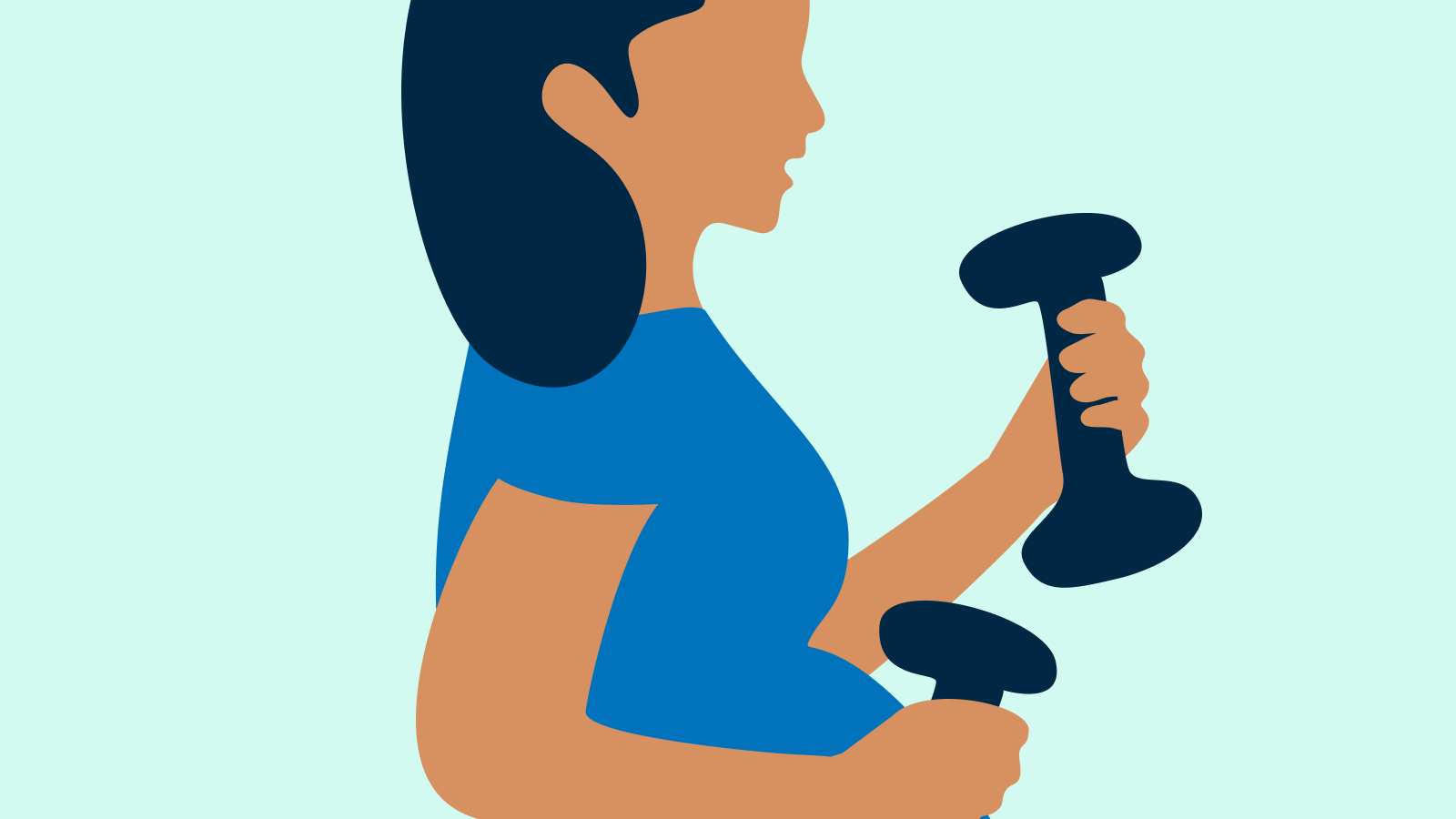Expecting a baby and wondering if you can continue, or even start, exercising? For most women, exercise is good for you and your baby. It helps you stay in shape and prepares your body for childbirth.
Despite this, research suggests that only 40% of women continue to exercise during pregnancy.
The good news is that regular exercise is safe when you’re pregnant. What’s important is that you choose the right types of activity that will work for you over the next 9 months as your body changes.
What are the benefits of exercising during pregnancy?
Pregnancy may feel like the ideal time to sit down, relax and put your feet up, but unless you’re experiencing complications, there’s evidence to suggest that physical activity is beneficial for both you and your baby.
As well as help you adapt to your changing body shape and maintain a healthy weight, regular exercise during pregnancy can:
- Lower your risk of gestational diabetes
- Reduce blood pressure
- Prepare your body for labour and delivery
Research also shows that exercising can make your pregnancy easier – it can improve your sleep, ease back pain, reduce your risk of constipation and boost your mood.
One study found that women who exercised mid-pregnancy had a lower risk of lower back pain, pelvic girdle pain and depression in late pregnancy.
What’s more, there’s also evidence to suggest that exercising during pregnancy can reduce your baby’s risk of developing diabetes, obesity and cardiovascular disease later in life.
How to keep fit during pregnancy
It’s natural to feel cautious about exercising during pregnancy. Here are some ways you can keep fit in your first, second and third trimester.
1. Keep active on a daily basis
Ideally, you should aim for 150 minutes of moderate-intensity activity every week. This can be broken down into smaller periods of time – for instance, 30 minutes of brisk walking per day for five days each week. You should be able to hold a conversation whilst exercising. If you can't, you’re probably pushing yourself too much.
Or if you’re new to exercising, you can start small and begin with sessions of 5 minutes and build up to 10 minutes, 20 minutes, and so on, until you’re exercising for longer durations.
Remember, every minute of activity counts, so this includes walking, housework, gardening and shopping.
2. Aim to continue with your normal activities or exercise
If you were physically active before pregnancy, you should be able to continue with your normal activities for as long as you’re comfortable.
If you decide to join an exercise class, let the instructor know you’re pregnant. Depending on what class you go to, they may give you modifications depending on your trimester. Also look out for prenatal classes.
3. Start gradually
If you weren’t active before pregnancy, start gradually. Exercise doesn’t have to be demanding to benefit you and your baby.
Walking is a brilliant exercise for beginners. It’s a low impact exercise with minimal stress on your joints. Research suggests a brisk walk has the potential to lower the risk of complications, including preeclampsia, gestational diabetes and excessive weight gain. It may also reduce the risk of premature birth.
4. Combine strengthening and aerobic exercises
Doing a combination of aerobic and strengthening exercises is beneficial during pregnancy.
Aerobic exercise – like brisk walking, dancing, swimming, gardening and housework – strengthens your heart and lungs, tones your muscles and improves your overall fitness.
Strengthening exercises – like weight training, walking upstairs or carrying shopping – strengthen your muscles and joints. This will help you carry your growing bump as well as prepare you for labour and when your baby is born.
Research shows that strengthening exercises during pregnancy can boost your energy and improve feelings of fatigue too. Aim to do muscle strengthening activities twice a week.
5. Add pelvic floor exercises into your routine
Pregnancy puts a lot of strain on your pelvic floor. This is a group of muscles that lie across the base of your pelvis, stretching from the pubic bone at the front to your tailbone at the bottom of the spine.
If these muscles are weak, there’s a greater chance of you experiencing stress or urinary incontinence. This is where you leak pee when you cough, sneeze, laugh, jump, walk, run or exercise.
Exercising your pelvic floor muscles during pregnancy and after childbirth helps you to reduce or avoid stress incontinence. So, if there was ever a better time to start these exercises, it’s now.
One study found that doing pelvic floor exercises during pregnancy may even be effective in shortening and reducing the risks of perineal tears during childbirth.
6. Be mindful about what you do
Although it’s important to stay active, there are some moves and exercises that you should avoid when expecting.
Avoid exercising while lying on your back After 16 weeks, avoid exercises that involve lying on your back for long periods. This is because the weight of your bump presses on your main blood vessel, reducing blood flow to your baby, as well as potentially making you feel dizzy or faint.
Avoid contact sports These include rugby, hockey, football, squash and martial arts, because there’s a risk your bump could be hit.
Avoid exercises where you could fall Horse riding, gymnastics or skiing all come with a higher risk of falling and injuring yourself. It may also be more difficult to maintain your balance because your growing baby bump changes your centre of gravity.
Avoid scuba diving and exercising at high altitudes Scuba diving isn’t safe during pregnancy and exercising at high altitudes (over 2,500 metres) reduces oxygen to you and your baby.
7. Listen to your body
Always listen to your body. Exercise doesn’t have to be demanding to be beneficial, so avoid pushing yourself too hard. If you feel uncomfortable, stop.
A good way to know whether you’re working at a suitable intensity is if you’re able to hold a conversation as you exercise. If you’re breathless, ease off a bit – you may be exercising too strenuously.
What’s more, it’s especially important to stay hydrated by drinking plenty of fluids when you’re exercising and avoid exercising in very hot weather. Always make sure you warm up and cool down as this can help prevent muscular injury.
How do I know if I’m pushing it too far?
Stop exercising and seek medical help from a doctor, midwife or obstetrician if you develop the following symptoms:
- Dizziness or feeling faint
- Shortness of breath before you start exercising
- Chest pains or palpitations
- A headache
- Calf pain or swelling
- Pelvic girdle pain
- Extreme tiredness or fatigue
- Abdominal pain
- Muscle weakness
When should I speak to a doctor?
If you have any complications during your pregnancy or have any concerns, speak to a doctor before you start exercising.
Always seek medical attention if you have:
- Vaginal bleeding or spotting
- A change in your baby’s movement
- Severe headaches
- Leg pain and a swollen calf
- Chest pain or breathlessness
- Stomach pain
This article has been medically reviewed by Dr Bryony Henderson.


